Table of Contents
- Tuxedo Cat Coat Variations.
- Types of Tuxedo Cats Coat Colors in Different Breeds.
- Tuxedo Cat Variations: Tuxedo vs Other Cats
- Mixed Breed Tuxedo Cats
- Tuxedo Cat Personality: A Class of Their Own
- FAQs: All About Tuxedo Cats
- What kind of cat is a tuxedo cat?
- What is the Tom and Jerry cat breed?
- What breed is my tuxedo cat?
- What are the types of tuxedo cats?
- Are tuxedo cats a breed?
- What breed are tuxedo cats/kitten with long hair?
- Russian blue tuxedo cat personality?
- What are American Shorthair tuxedo cats?
- What is a medium hair tuxedo cat?
- Can a Norwegian Forest cat be tuxedos?
If you’re curious about tuxedo cat colors ,types, personality, gender traits, breeds, and kitten care, you’re in the right place. Whether you’re already a proud tuxedo cat parent or considering bringing one of these dapper kitties into your home, you’ve probably got questions. What makes these black-and-white beauties so special? Are their personalities as unique as their coat patterns?
We know the struggle of sorting through endless information, trying to find answers that matter. Maybe you’re wondering if tuxedo cats are affectionate, if gender affects their traits, or even if certain breeds are more likely to have this striking coat pattern.
As passionate cat enthusiasts, we’ve spent years helping cat parents understand their feline friends better. With tuxedo cats, there’s so much to love—and learn—and we’re here to guide you through it all.
From their charming quirks to breed-specific insights, this guide is designed for cat lovers like you. Let’s explore everything you need to know about tuxedo cats, so you can make informed decisions and enjoy your feline companion to the fullest! 😸
Tuxedo Cat Coat Variations.
Tuxedo cats are not a specific breed; instead, they are cats with a distinctive black-and-white bicolor coat pattern that resembles formal wear ,Despite the appearance ,tuxedo cats can be male or female. This unique pattern can be found across various cat breeds and even in mixed breeds. Although many are black and white, these coats can range in various colors like gray, silver, orange, and even tortoiseshell with patches of white.
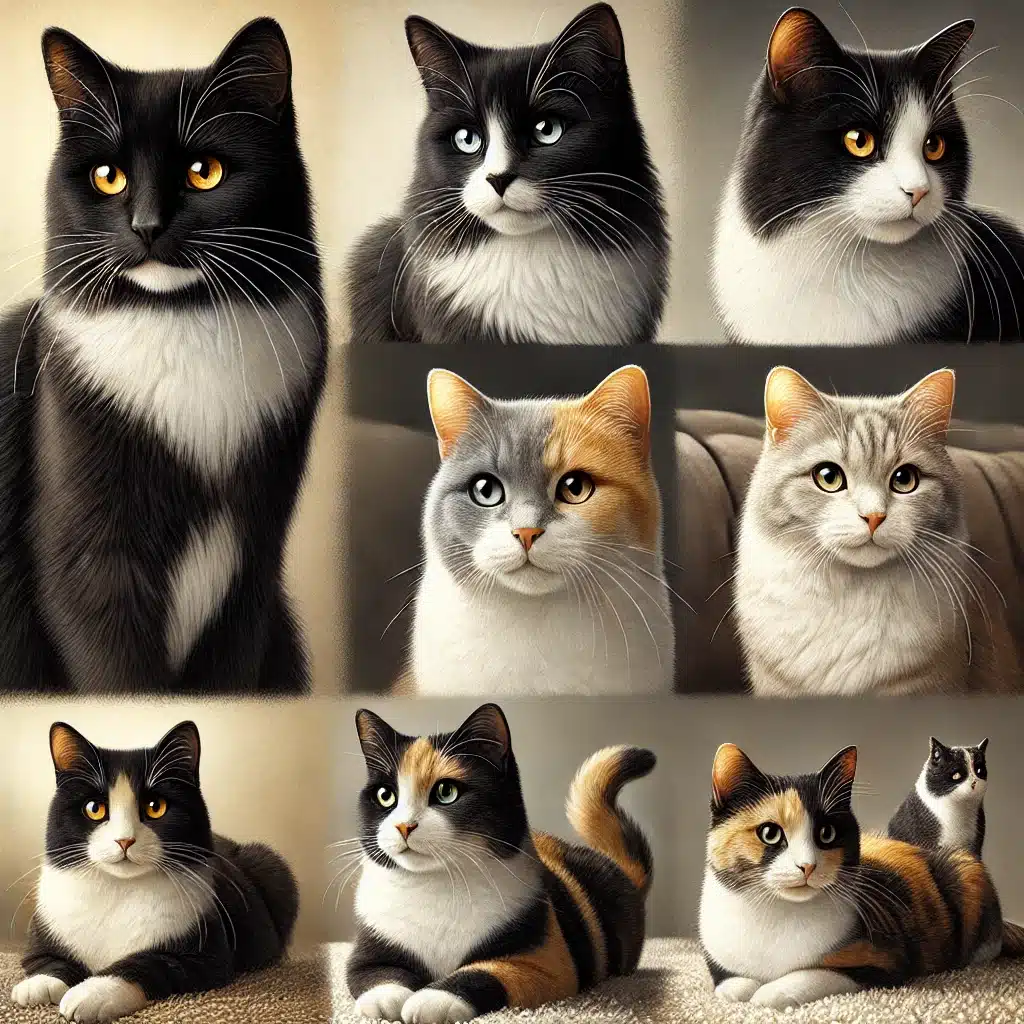
Tuxedo cats, affectionately called “tuxies,” are known for their sleek black fur paired with white markings on the chest, paws, and sometimes the face. Some variations include:
- Spats: White “boots” or socks.
- Striped Nose: A white stripe running down the nose.
- Masked Tuxedo: White markings around the chin and nose, sometimes with white tips on the nose.
- Kitler: A pattern resembling a white mustache, which gives a playful nod to its infamous nickname.
While their coat patterns are undeniably stunning, the personalities of tuxedo cats are even more endearing. Because they can come from various breeds, their behavior and temperament will largely depend on their genetic background and how they are raised.
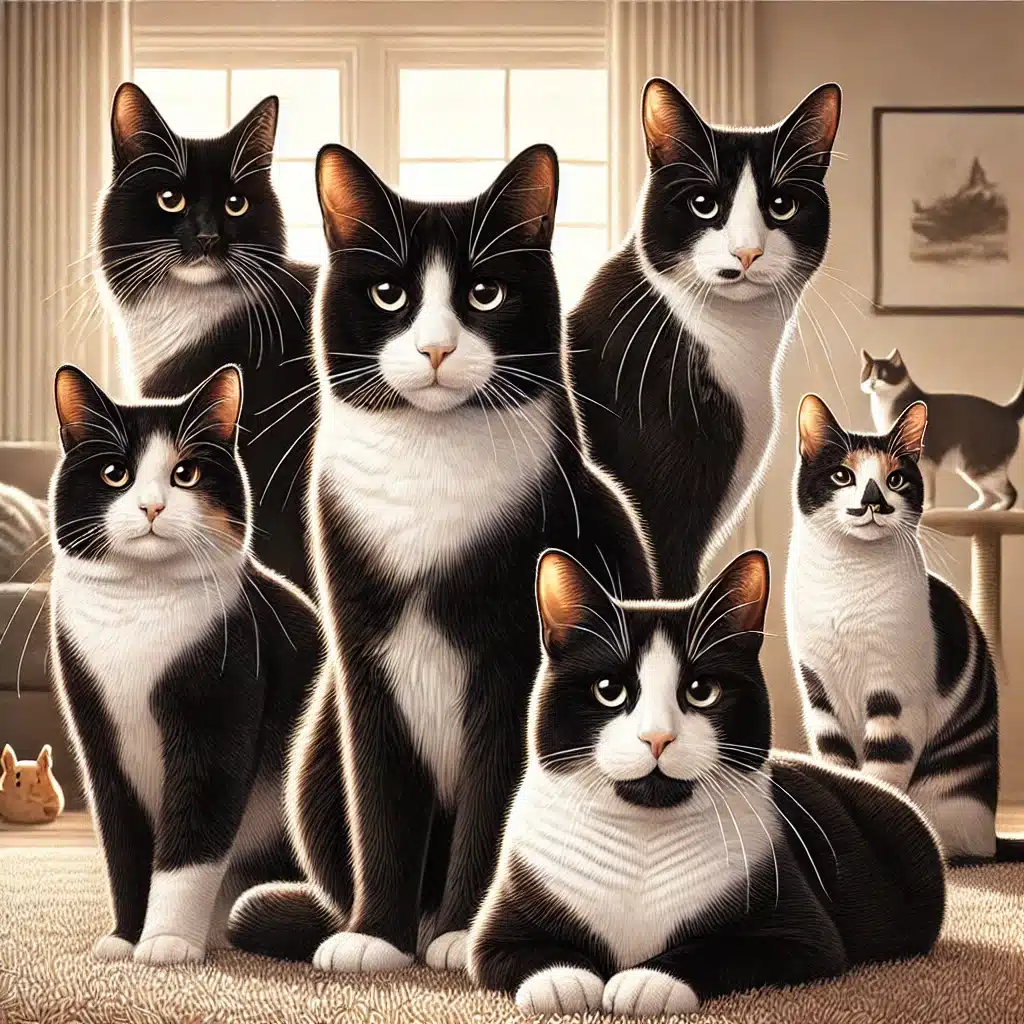
Types of Tuxedo Cats Coat Colors in Different Breeds.
Tuxedo cats aren’t a specific breed, many popular breeds can sport this stylish black-and-white pattern. Depending on the breed, they can showcase darker shades like deep gray or rich brown as their primary color, resulting in gray tuxedo cats, brown tuxedo cats . While their defining characteristic is a white chest—often shaped like a bib—the distribution extent to black , gray, silver, orange, and even tortoiseshell with patches of white. fur can vary widely.
Some tuxedo cats have a sleek and short coat, while others may flaunt long, shaggy, or silky fur. This variety comes from the many breeds that can exhibit tuxedo patterns, including:
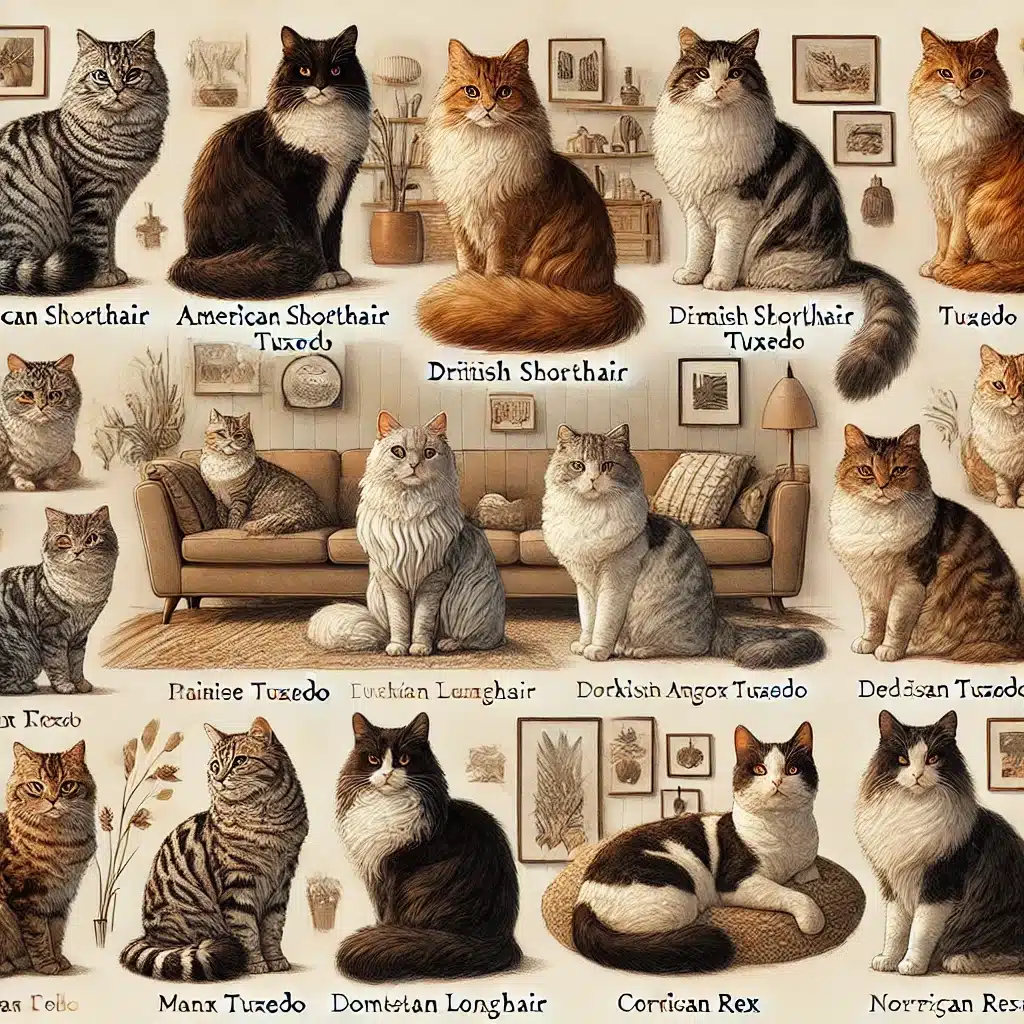
American Shorthair Tuxedo
Known for their dense, smooth coat and adaptable nature.
Brirtish Shorthair Tuxedo
Recognized for their plush, thick fur and round faces.
Domestic Shorthair Tuxedo and Domestic Longhair Tuxedo
Mixed breed cats with short or long coats, commonly found with tuxedo patterns.
Maine Coon Tuxedo
Large, fluffy cats with luxurious long coats and playful personalities.
Persian Tuxedo
Elegant long-haired cats with a calm and affectionate temperament.
Turkish Angora Tuxedo
Silky, fine-coated cats often showcasing striking tuxedo patterns.
Siberian Tuxedo
Fluffy, long-haired cats with a hearty build and friendly disposition.
Manx Tuxedo
Tailless cats with a rounded appearance and short or long coats.
Ragdoll Tuxedo
Long-haired cats known for their relaxed and affectionate nature
Scottish Fold Tuxedo
Cats with folded ears and soft coats, available in short or long hair.
Cornish Rex Tuxedo and Devon Rex Tuxedo
Curly-coated cats with unique fur textures and playful temperaments.
American Curl Tuxedo
Cats with distinctive curled-back ears and tuxedo patterns.
Norwegian Forest Cat Tuxedo
Large, fluffy cats with a rugged appearance and a tuxedo flair.
Rare Tuxedo Cats:
The rarest tuxedo cats, referred to as “black ties,” have a distinct black patch on their white chest resembling a bowtie. These elegant felines are not just visually stunning but are often regarded as symbols of good luck and wealth. Having a “black tie” tuxedo cat in your household is thought to bring prosperity and happiness—a perfect companion for formal and casual occasions alike!
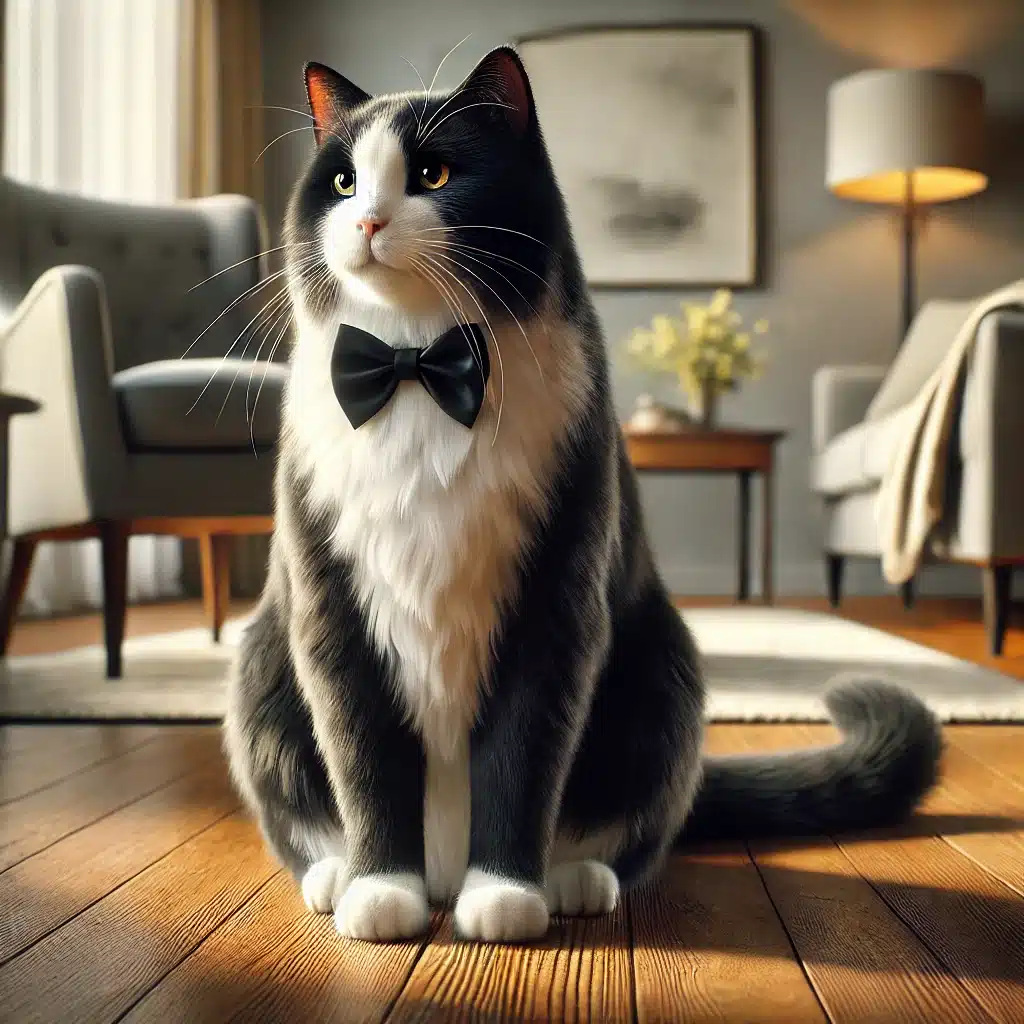
Breed Overview
| Attribute | Details |
|---|---|
| Other Names | Tuxie, Felix cat, Jellicle cat, Piebald |
| Personality | Varies with breed |
| Weight | Up to 18 pounds, depending on breed |
| Length | Up to 36 inches (nose to tail), depending on breed |
| Coat Length | Short hair, long hair, or curly |
| Coat Colors | Black ,gray, silver, orange, and even tortoiseshell with patches of white. |
| Coat Patterns | Bicolor |
| Eye Color | Various shades of gold, green, or blue |
| Lifespan | Up to 20 years |
| Hypoallergenic | No (Sphynx and Devon Rex breeds may be less allergenic) |
| Origin | Ancient Egypt |
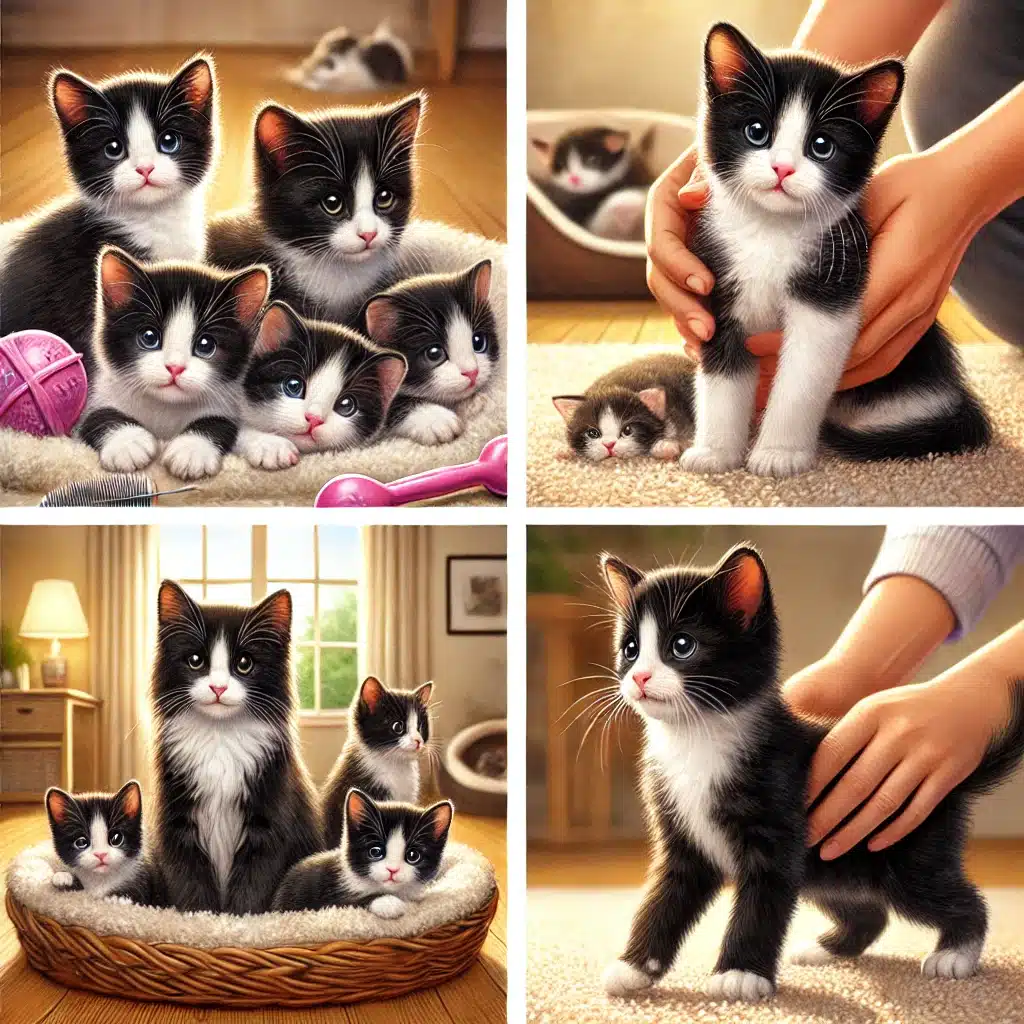
How to Take Care of Tuxedo Cat Kittens
Tuxedo cat kittens need a balanced diet, proper vaccinations, and regular vet check-ups to ensure healthy growth. Provide them with a warm, safe space and interactive toys to encourage play and bonding. Socialize them early to help them adapt to people and other pets. Grooming needs depend on their coat type, so brush regularly for long-haired tuxedo kittens. Additionally, monitor their activity levels and weight to prevent obesity, which can lead to health issues as they grow older. Understanding tuxedo cat lifespan insights can help you anticipate their needs and provide the best care throughout their lives, as they typically live 12-18 years with proper attention. Building a routine of affection and care ensures a happy, well-adjusted companion by your side.
Taking Care of Mute Tuxedo Cats
Mute tuxedo cats rely on body language to communicate, so pay attention to their behavior and expressions. Ensure a calm and nurturing environment to reduce stress. Use consistent routines and positive reinforcement to help them feel secure. Regular check-ups are vital to monitor their overall health and address any special needs.
General Personality Traits Table
| Trait | Description |
|---|---|
| Affection Level | Varies (depends on breed and upbringing) |
| Friendliness | Varies |
| Kid-Friendly | Varies |
| Pet-Friendly | Varies |
| Exercise Needs | Varies |
| Playfulness | Varies |
| Energy Level | Varies |
| Intelligence | Varies |
| Tendency to Vocalize | Varies |
| Amount of Shedding | Varies |
While tuxedo cats are not one-size-fits-all in terms of personality, many tuxedo cat parents find their feline companions to be charming, smart, and highly engaging. With proper care and attention, tuxedo cats can make wonderful additions to households of all types!
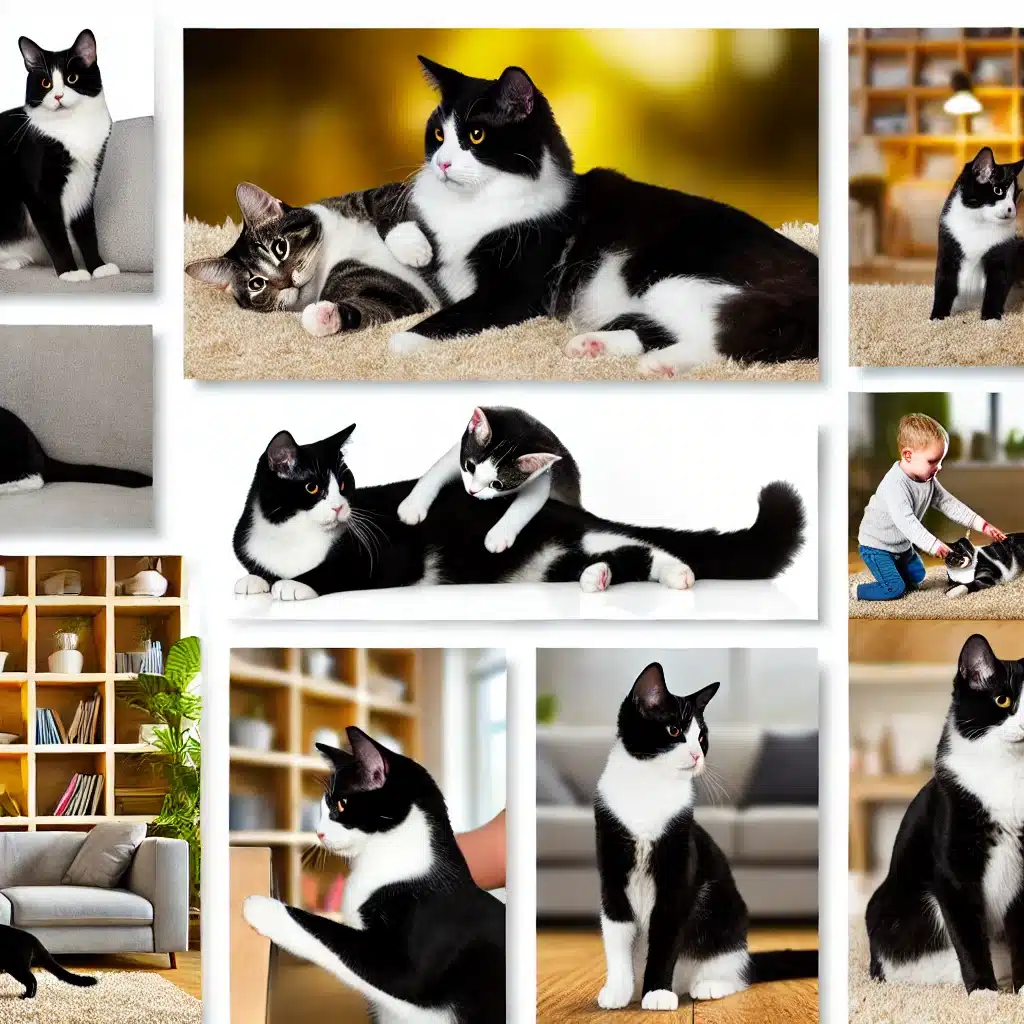
Tuxedo Cat Variations: Tuxedo vs Other Cats
Tuxedo cats have their own unique charm, but how do they stack up against other popular cat patterns like tabby, orange, black, and calico cats? Let’s break it down:
Tuxedo Cat vs Tabby Cat
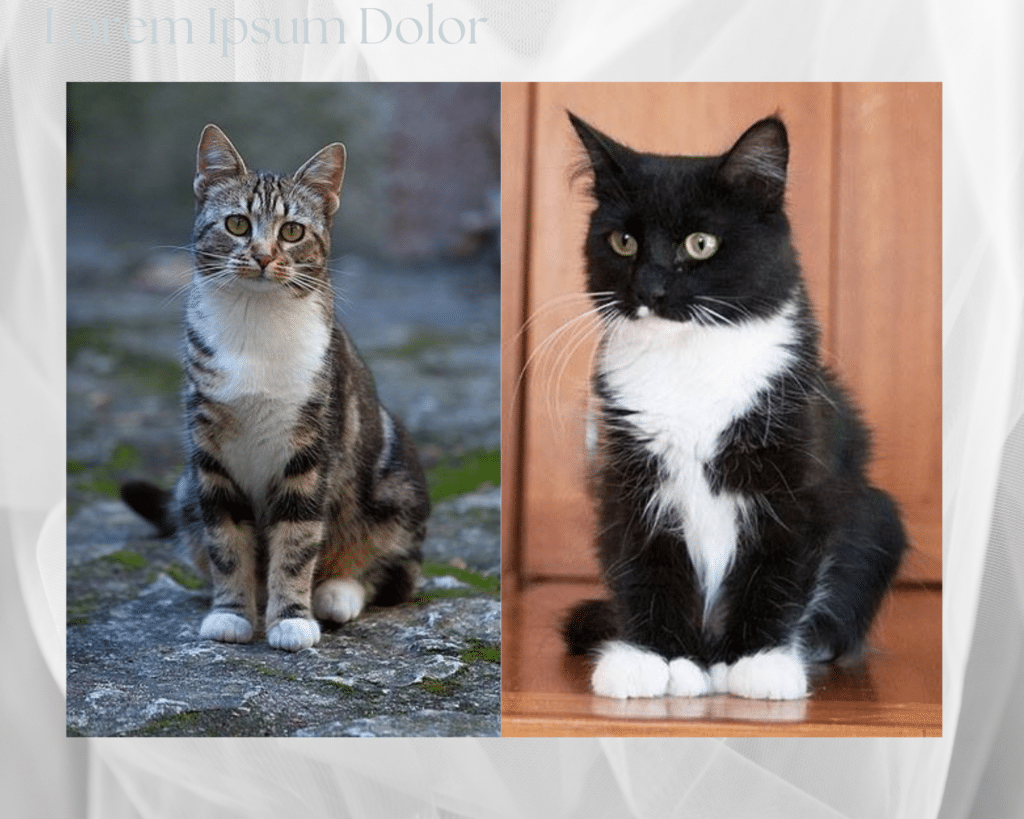
- Pattern: Tabby cats are recognized by their distinct stripes, whorls, or spots, and often feature an “M” shape on their foreheads. In contrast, tuxedo cats have a bicolor pattern with white patches.
- Color Variations: Tabbies come in several color variations like brown, orange, and gray. Tuxedo cats are usually black and white or gray and white.
- Can a Tabby Be a Tuxedo?: No, tabbies and tuxedos are distinct patterns. While a tabby can have white markings, the tabby pattern of stripes and spots sets them apart.
- Breeds: Both patterns are common across many breeds, including Domestic Shorthair, Maine Coon, and American Shorthair.
- Temperament: Tabbies are known for being playful and independent, similar to tuxedo cats. Their personalities are more influenced by breed than their coat pattern.
Tuxedo Cat vs Orange Cat
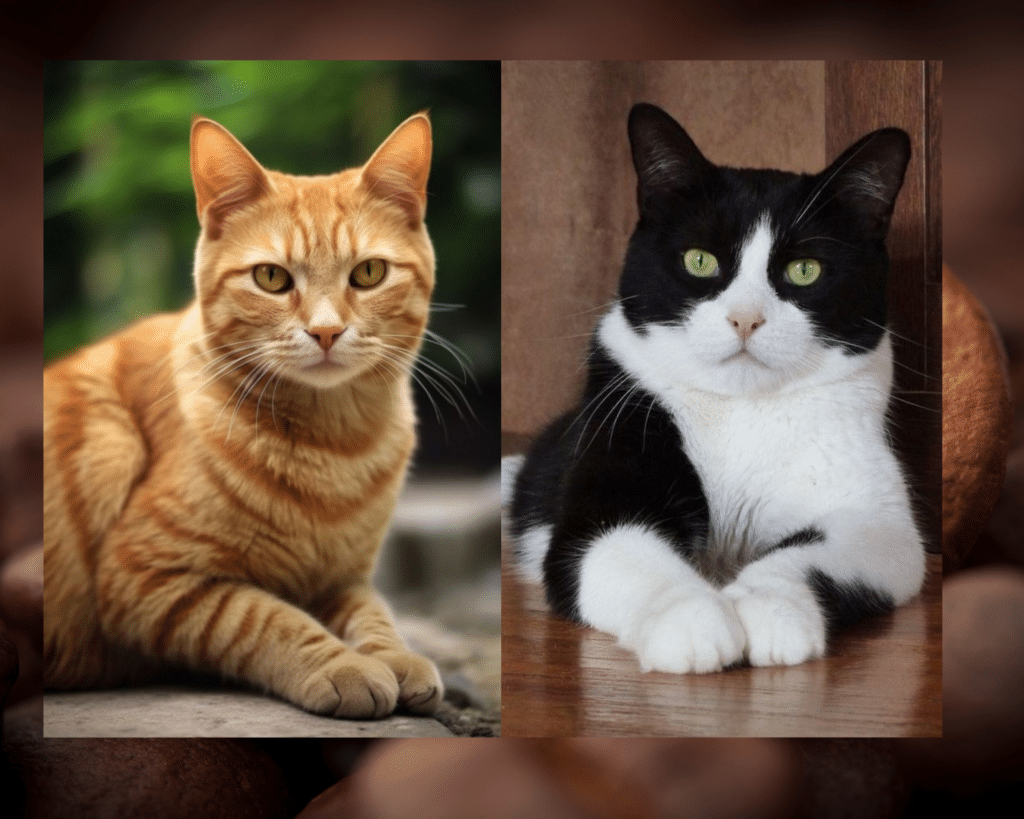
- Pattern: Orange cats are typically solid or tabby, with shades ranging from light orange to deep red. Tuxedo cats, on the other hand, are black or gray with white patches.
- Breeds: Both tuxedo and orange cats can be found in various breeds, such as British Shorthair, Persian, and Domestic Shorthair.
- Temperament: Orange cats, especially males, are often described as being more sociable and affectionate, while tuxedo cats can have a wide range of personalities depending on their breed.
Tuxedo Cat vs Black Cat
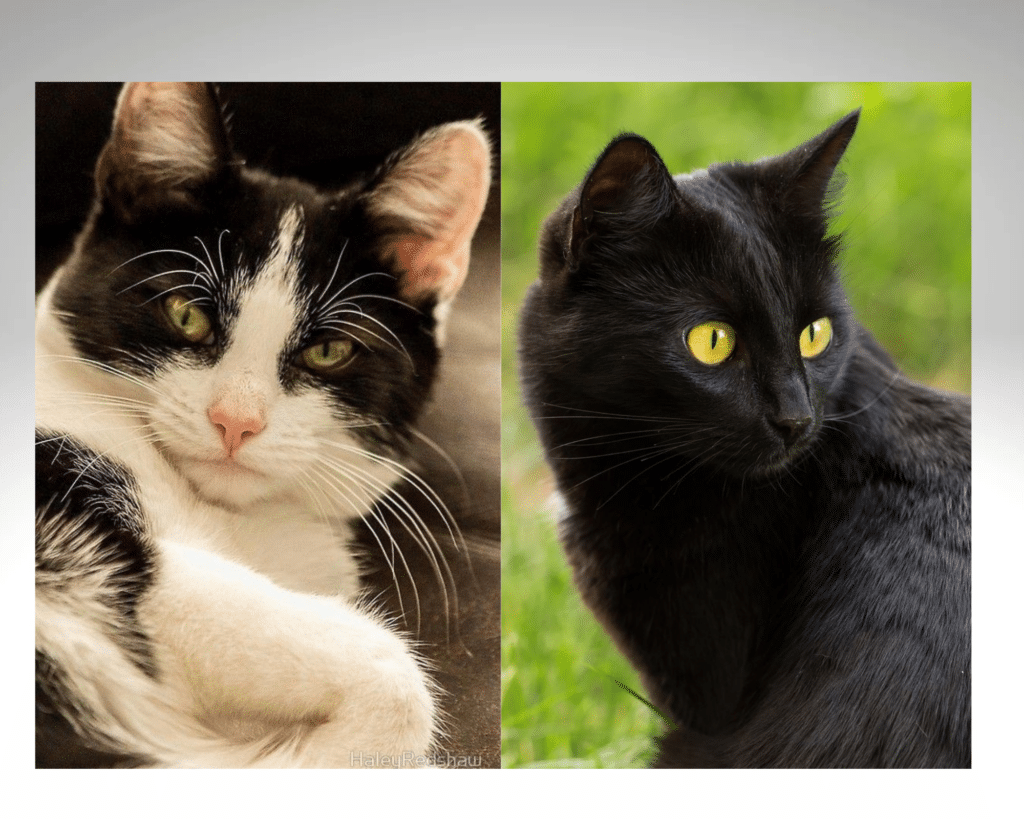
- Pattern: Black cats have entirely black fur, whereas tuxedo cats are black with white patches, giving them a more distinct look.
- Breeds: Both patterns are found in breeds like the Bombay, American Shorthair, and Domestic Shorthair.
- Temperament: Black cats are often considered calm and mysterious, but like tuxedo cats, their behavior depends more on the breed than on coat color.
Tuxedo Cat vs Calico Cat
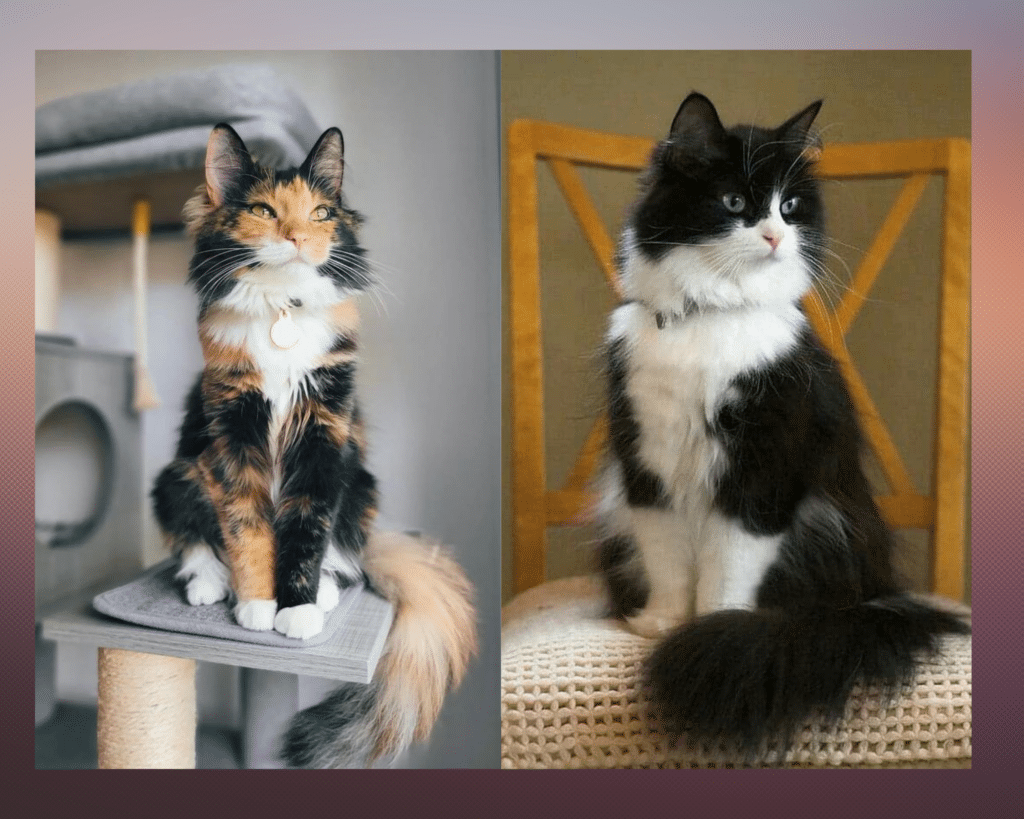
- Pattern: Calico cats are tri-colored, usually featuring a mix of orange, black, and white. Tuxedo cats, however, stick to a two-color scheme.
- Breeds: Both tuxedo and calico cats are found in breeds like the Domestic Shorthair, American Shorthair, and Persian.
- Temperament: Calico cats tend to have more independent and sassy personalities. Tuxedo cats vary in temperament depending on their breed.
- Gender Trends: Most calico cats are female due to their genetic makeup, while tuxedo cats are evenly split between males and females.
Rarity
Tuxedo cats are relatively common across many breeds, while calico cats are considered more unique due to their genetic link to their colors.
Mixed Breed Tuxedo Cats
When tuxedo cats are mixed with other breeds, their patterns can become even more unique.
Tuxedo Cat and Maine Coon Mix
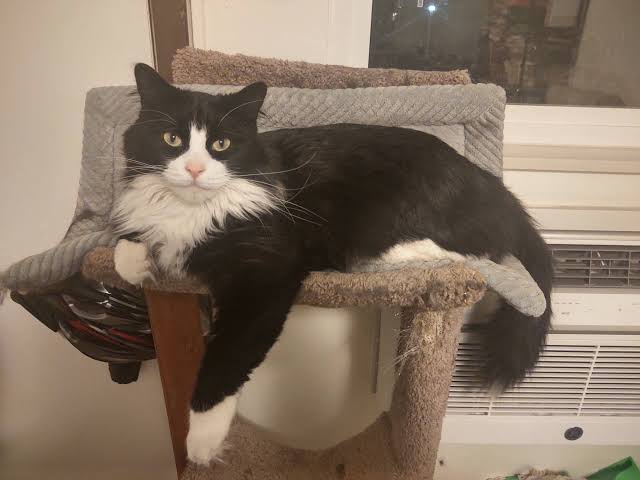
Tuxedo Cat and Orange Cat Mix
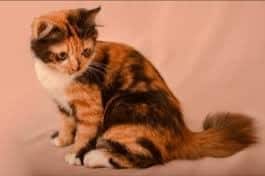
Mixed breed tuxedo cats offer a fun variety of markings and temperaments, depending on the combination! Some tuxedo cat breeds, such as the Maine Coon or the American Shorthair, can bring out certain traits in a mixed tuxedo cat, like a larger size or a playful nature. Additionally, tuxedo cat breeds are known for their stunning black and white markings, which can vary from cat to cat, making each one unique. Whether you’re drawn to their striking appearance, their friendly demeanor, or their intelligence, tuxedo cat breeds offer something for every cat lover.
Tuxedo Cat Personality: A Class of Their Own
While a tuxedo cat’s personality often depends on their breed, certain traits are consistently reported by owners. Just like any other cat, their temperament is influenced by their individual genetics, upbringing, and breed characteristics.
However, tuxedo cats seem to stand out with some unique quirks and charms that make them memorable companions. Their striking black-and-white coat gives them a sophisticated, almost formal appearance, which has earned them a reputation for being elegant yet playful. Many believe that everything about tuxedo cats, from their dapper look to their spirited personalities, exudes confidence and charm. Whether they are curled up in your lap or chasing after a toy, these felines have a special way of capturing hearts with their mix of grace and mischief.
Tuxedo cat owners often report the following about their cats’ personalities:
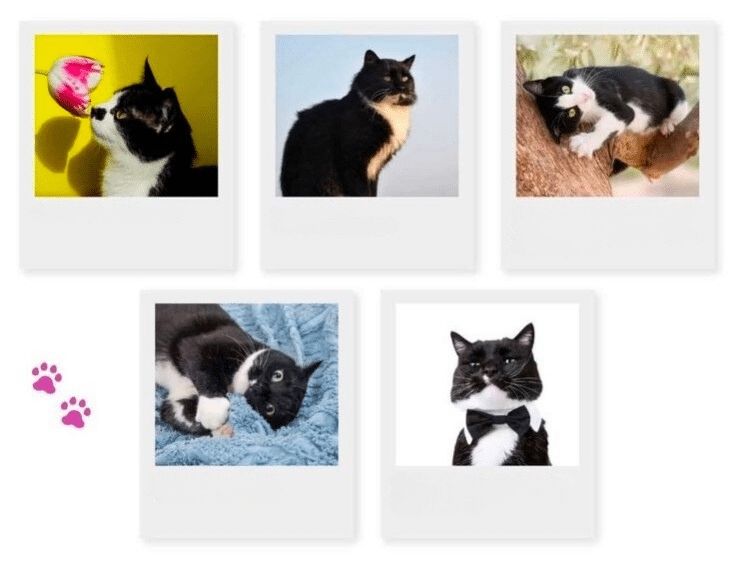
- Affectionate and Social: Many tuxedo cats are especially friendly, bonding well with humans. They love attention and tend to seek out companionship, making them perfect for those looking for a social pet.
- Intelligent and Playful: Tuxedo cats are known for their intelligence. They learn tricks quickly and enjoy engaging with interactive toys, staying curious and active throughout the day.
- Confident and Quirky: These cats often display confident, sometimes mischievous behavior. Their quirky nature leads them to explore their surroundings and get into playful antics, keeping their owners entertained.
FAQs: All About Tuxedo Cats
What kind of cat is a tuxedo cat?
Tuxedo cats are not defined by their breed but by their piebald bicolor coat pattern
What is the Tom and Jerry cat breed?
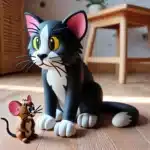
While not officially named, the cat in Tom and Jerry resembles a Domestic Shorthair with a tuxedo coat pattern
What breed is my tuxedo cat?
To identify the breed of your tuxedo cat, consider their physical features, coat texture, and size. Mixed breeds often have tuxedo patterns as well.
What are the types of tuxedo cats?
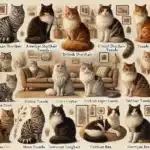
Tuxedo cats can vary by the breed they belong to, including Domestic Shorthair, Maine Coon, Turkish Van, and more. Their coat types can range from short to long and silky.
Are tuxedo cats a breed?
No, tuxedo cats are not a breed. They are cats with a bicolor pattern resembling formal wear.
What breed are tuxedo cats/kitten with long hair?
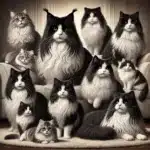
Tuxedo cats or kittens with long hair can come from breeds like Maine Coon, Persian, Norwegian Forest Cat, and Ragdoll. These breeds combine their luxurious long fur with the distinctive tuxedo bicolor pattern, making them both elegant and charming.
Russian blue tuxedo cat personality?
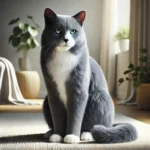
A Russian Blue tuxedo cat is affectionate, intelligent, and loyal, with a calm and observant nature. They are gentle, playful, and adapt well to routines, though they may be shy with strangers at first.
What are American Shorthair tuxedo cats?
These are American Shorthair cats that exhibit the black-and-white tuxedo pattern. They’re known for their smooth coats and adaptable personalities.
What is a medium hair tuxedo cat?
A medium-hair tuxedo cat has a coat length between short and long hair. This can occur in breeds like Turkish Angora or Maine Coon.
Can a Norwegian Forest cat be tuxedos?

Yes, Norwegian Forest Cats can have tuxedo patterns. Their long, thick coats can display the classic black-and-white bicolor markings, adding to their majestic and elegant appearance.
